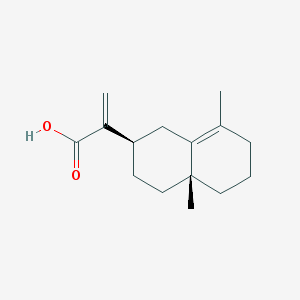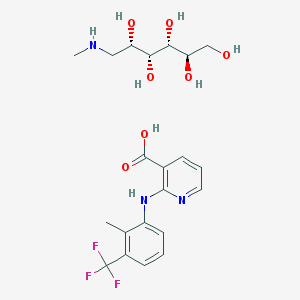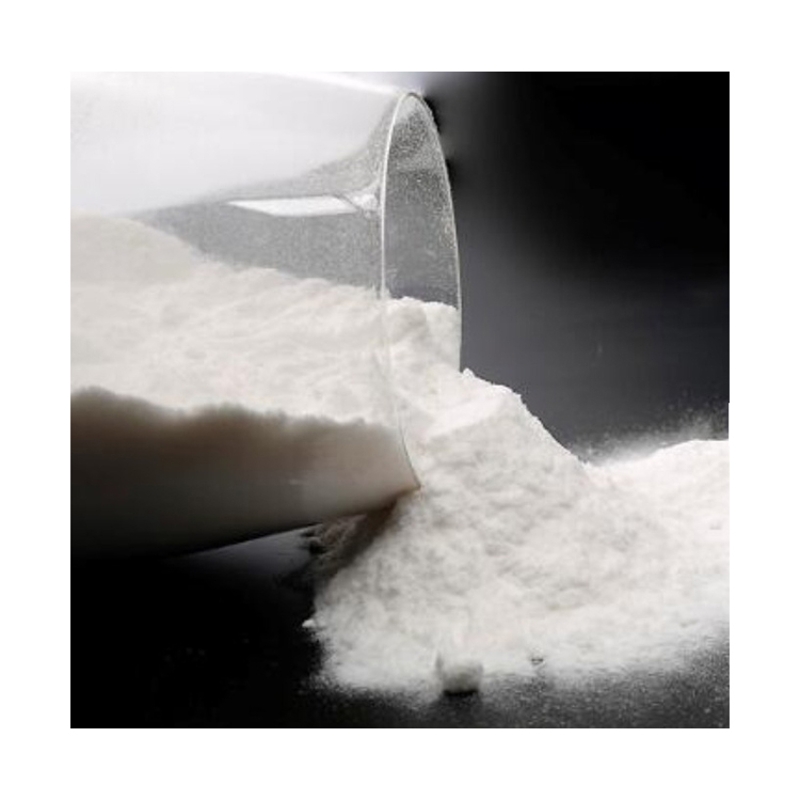-
Categories
-
Pharmaceutical Intermediates
-
Active Pharmaceutical Ingredients
-
Food Additives
- Industrial Coatings
- Agrochemicals
- Dyes and Pigments
- Surfactant
- Flavors and Fragrances
- Chemical Reagents
- Catalyst and Auxiliary
- Natural Products
- Inorganic Chemistry
-
Organic Chemistry
-
Biochemical Engineering
- Analytical Chemistry
- Cosmetic Ingredient
-
Pharmaceutical Intermediates
Promotion
ECHEMI Mall
Wholesale
Weekly Price
Exhibition
News
-
Trade Service
The chemical industry plays a crucial role in modern society, providing the raw materials and products that are essential for many aspects of daily life.
However, the production and use of chemicals also pose potential risks to the health and safety of workers and the environment.
As such, the development and production of safe and effective chemicals is of paramount importance.
One such chemical that has garnered attention in recent years is (3-exo)-3-[3-methyl-5-(1-methylethyl)-4H-1,2,4-triazol-4-yl]-8-(phenylmethyl)-8-azabicyclo[3.
2.
1]octane.
This compound, also known as UM796, is a synthetic cannabinoid receptor agonist, which means that it mimics the effects of naturally occurring cannabinoids in the body.
The development and production of UM796 is an important example of the chemical industry's efforts to create new and innovative products that can improve the lives of people.
However, the safety of UM796 is a critical consideration, as synthetic cannabinoids have been linked to a range of adverse health effects, including anxiety, agitation, and psychosis.
To evaluate the safety of UM796, it is important to consider the potential risks associated with its production, use, and disposal.
In this regard, the chemical industry has developed a number of protocols and guidelines to minimize the risks associated with the production and use of chemicals.
One of the key safety considerations for UM796 is its potential for abuse.
As a synthetic cannabinoid, it has the potential to produce psychoactive effects similar to those associated with marijuana.
To minimize the risk of abuse, the chemical industry has developed strict guidelines for the production and distribution of UM796.
In addition, the chemical industry has also developed procedures for the safe handling and disposal of UM796.
This includes the proper storage of raw materials, the use of appropriate safety equipment, and the implementation of waste management protocols to ensure that any potential releases of the chemical are managed in a safe and responsible manner.
Another critical safety consideration for UM796 is its potential for toxicity.
To evaluate this risk, the chemical industry has conducted extensive toxicology studies on the compound.
These studies have shown that UM796 has the potential to cause a range of adverse health effects, including respiratory depression and cardiovascular toxicity.
To minimize these risks, the chemical industry has developed guidelines for the safe handling and use of UM796.
This includes ensuring that workers are properly trained and equipped to handle the chemical, as well as establishing safe exposure limits and providing appropriate personal protective equipment.
In addition to the risks associated with the production, use, and disposal of UM796, there are also potential environmental impacts associated with its production and disposal.
To address these impacts, the chemical industry has developed protocols for the safe handling and disposal of waste materials, including UM796.
These protocols include the proper containment and disposal of hazardous waste, as well as the implementation of measures to minimize the release of chemicals into the environment.
This includes the use of treatment systems to remove contaminants from waste streams, as well as the establishment of buffer zones around production facilities to minimize the impact of chemical releases on neighboring communities.
In conclusion, the safety of (3-exo)-3-[3-methyl-5-(1-methylethyl)-4H-1,2,4-triazol-4-yl]-8-(phenylmethyl)-8-azabicyclo[3.
2.
1]octane, or UM796, is an important consideration for the chemical industry.
The development and production of this compound,







